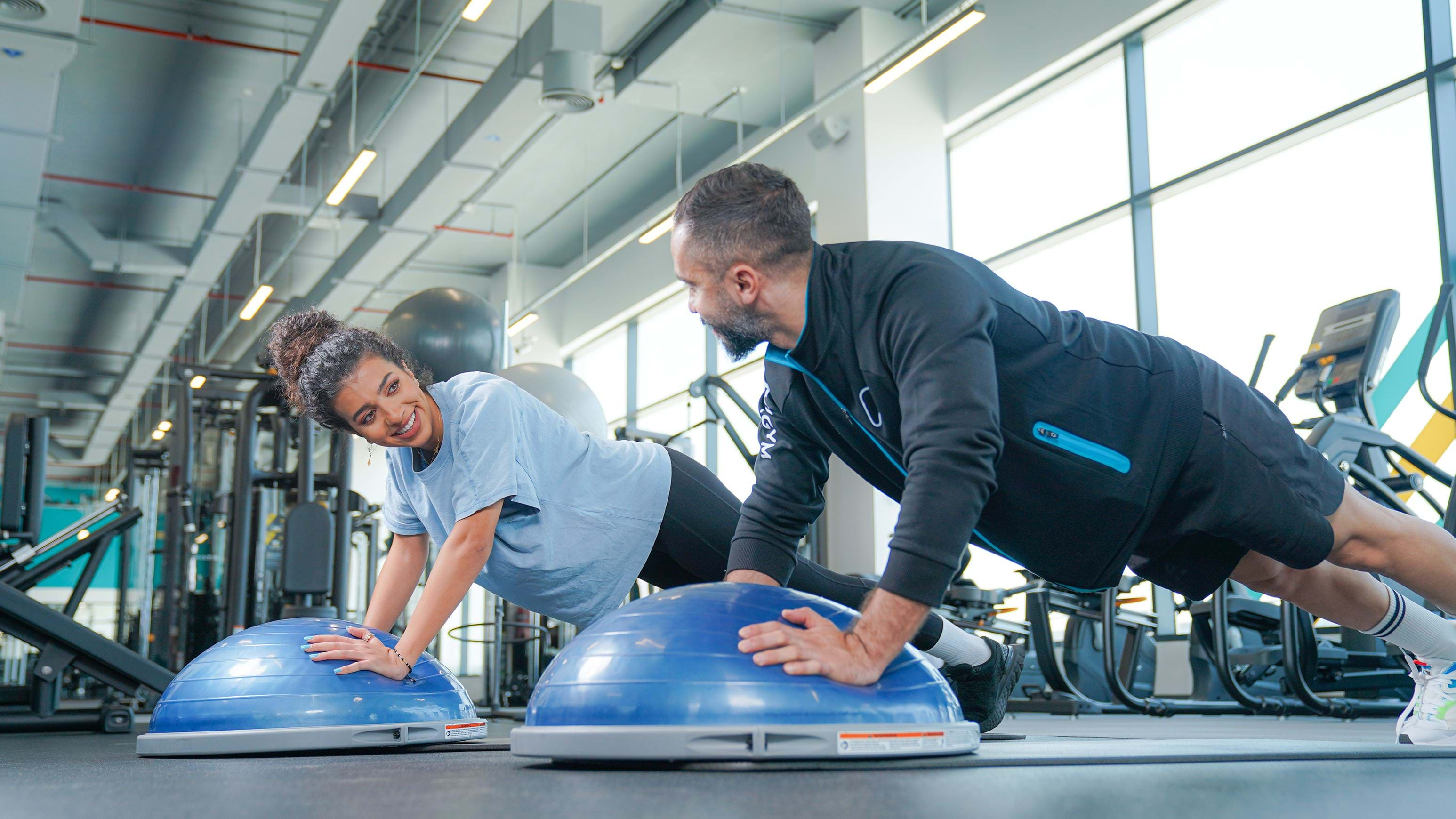5 Plank Exercises to Add to Your Abs Exercise Routine

Are you ready to transform your core strength but unsure where to begin? Plank exercises are a cornerstone of a good abs workout, known not only for enhancing core stability and strength but also for offering a full-body tone. Whether you're a fitness enthusiast or stepping into the gym for the first time, planks provide a solid foundation for a stronger, more defined abdomen. Dive into these five dynamic plank exercises recommended by PureGym, designed to challenge and engage multiple muscle groups for an all-encompassing workout.
Stability Ball Plank Variations Introducing a stability ball into your plank exercise can drastically increase the intensity of your workout, challenging your balance and core stability even further. This variation not only targets the deeper abs muscles but also engages the lower back and hips, promoting better posture and reducing the risk of back pain.
1. The Classic Stability Ball Plank In this exercise, you can begin by placing your forearms on the stability ball, ensuring your elbows are aligned under your shoulders. You can then proceed by extending your legs behind you, forming a straight line from head to heels. The instability of the ball forces your core to work harder to maintain balance, intensifying the workout. Aim to hold this position for 30 seconds to one minute, gradually increasing the duration as your strength improves.
2. Stability Ball Plank Rolls Add a dynamic twist with plank rolls. Begin in the classic position, then roll the ball forward, engaging your shoulders and arms in the process. This movement enhances the exercise's intensity, offering a comprehensive upper body and core workout.
Forearm Plank Variations
Forearm planks are known for their effectiveness in building core strength and endurance. By focusing on the forearm plank and its variations, you can add diversity to your workout, preventing boredom and plateauing.
1. The Forearm Plank Hold
Start on your forearms with your elbows directly under your shoulders and your body in a straight line from head to heels and hold for as long as you can. This exercise engages your core and your glutes and is deceptively challenging and serves as a great baseline to measure your core strength over time.
2. The Forearm Plank with Leg Lift
To increase the intensity, incorporate leg lifts into your forearm plank. From the basic hold position, lift one leg off the ground, keeping it straight and aligned with your body. Hold for a few seconds before switching to the other leg. This variation not only targets the abs but also the glutes and lower back, providing a well-rounded core workout.
Rocking Plank
Start in a standard plank position on your forearms. Once stable, rock your body forward, coming onto the tips of your toes, and then rock back to the starting position. This forward and backward motion forces your core to adapt and stabilize throughout the movement, boosting the intensity of the workout. Repeat the exercise multiple time, focusing on smooth and controlled movements.
Plank with Shoulder Touch
The plank with shoulder touch introduces an element of instability, requiring you to balance on one arm while touching the opposite shoulder with your free hand. This variation not only strengthens the core but also improves balance and coordination.
How to Execute the Plank with Shoulder Touch
From a high plank position, shift your weight onto one hand while lifting the other hand to touch the opposite shoulder. Keep your hips as stable as possible to avoid rocking. Alternate hands with each repetition, aiming for a seamless transition between touches.
Reverse Plank
Often overlooked in favor of its more popular counterpart, the reverse plank is a powerful exercise for targeting the abs, glutes, and hamstrings. This variation emphasizes the posterior chain, providing a balanced approach to core conditioning.
How to do the Reverse Plank Exercise
Sit on the floor with your legs extended in front of you. Place your hands behind your hips, fingers pointing towards your feet. Lift your hips off the ground, forming a straight line from your head to your heels. Hold this position, focusing on engaging your core and glutes to maintain the lift. The reverse plank is a testament to the versatility of plank exercises, proving that flipping the script can lead to significant gains in strength and stability.
From the stability ball variations to the reverse plank, each exercise offers a unique challenge that can help you push past plateaus and reach new heights in your fitness journey. Remember, consistency is key, and by adding these plank exercises into your regular workout routine, you will be on the path to achieving the best body workout.
If you're at the beginning of your fitness journey and looking for guidance, PureGym welcomes you with open arms. Our classes cater to all levels, offering full-body workouts that focus on strengthening and toning every part of your body, including targeted exercises for your core. Apply for a membership and join our fitness classes now.
Frequently Asked Questions
- How long should I plank for core strength?
For core strength, aim to hold a plank for 20 to 30 seconds initially, gradually increasing to one minute or longer as you build endurance.
- Is just planking enough for core?
While planking is highly effective for core strengthening, incorporating a variety of exercises ensures balanced development and prevents plateauing.